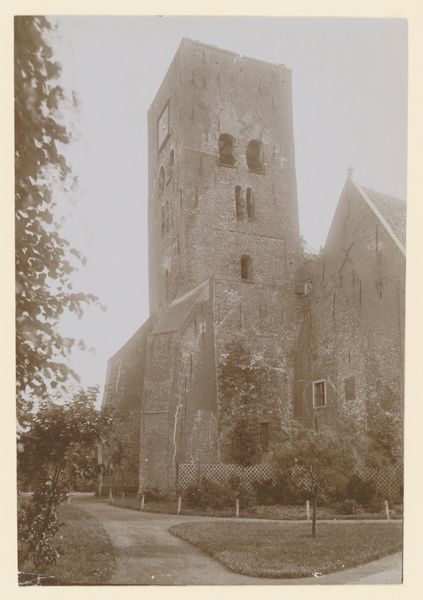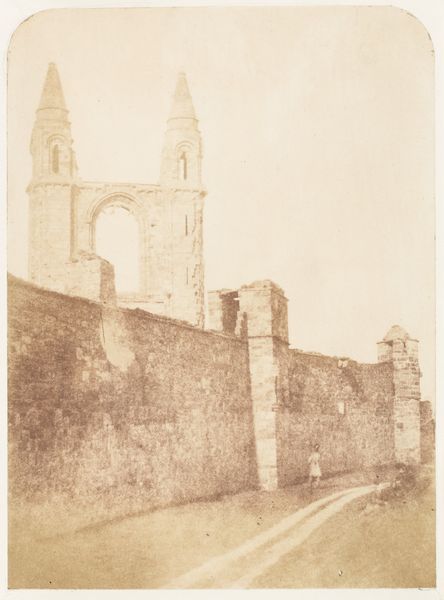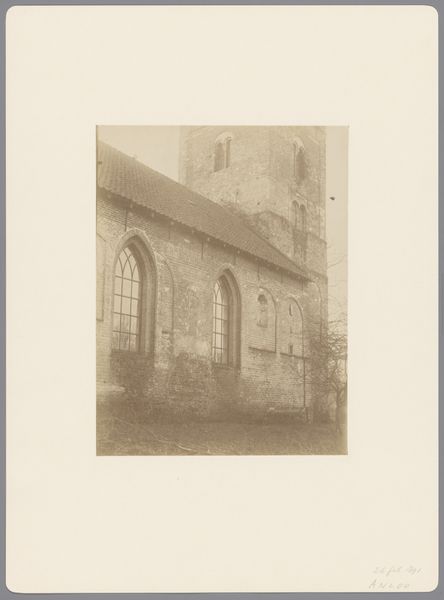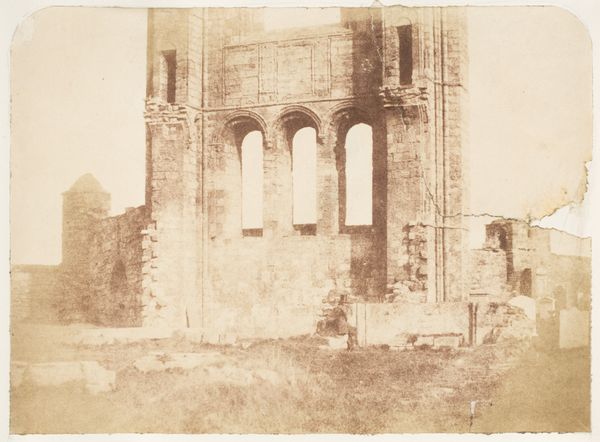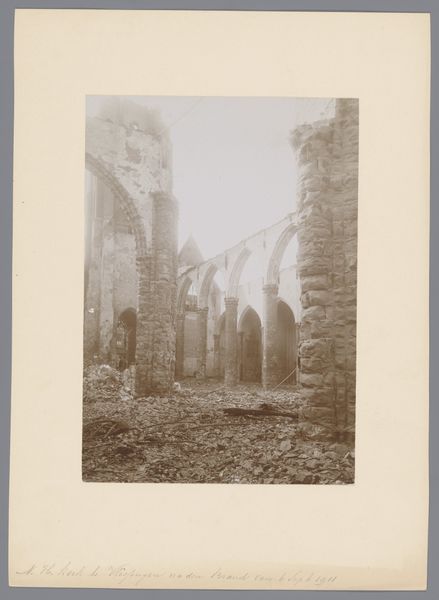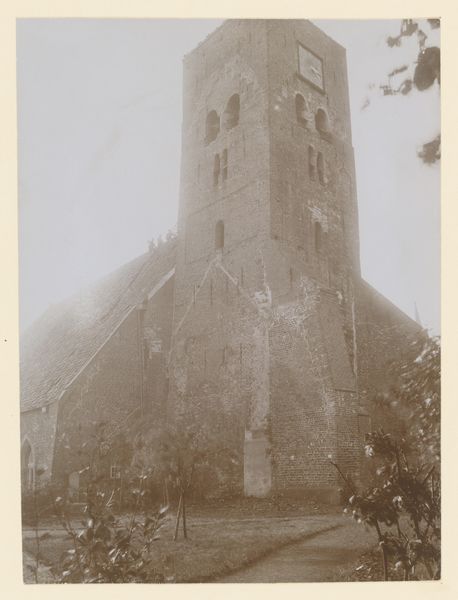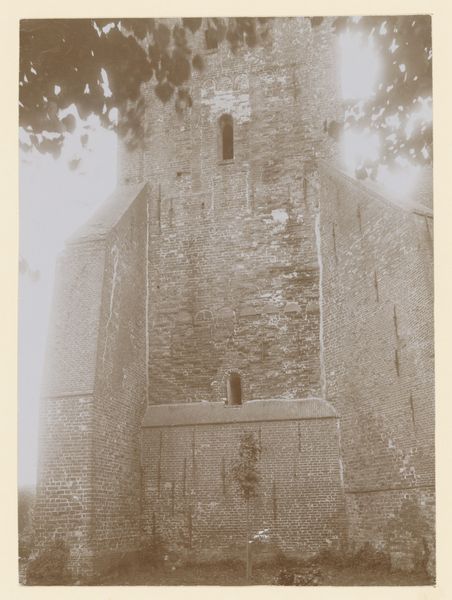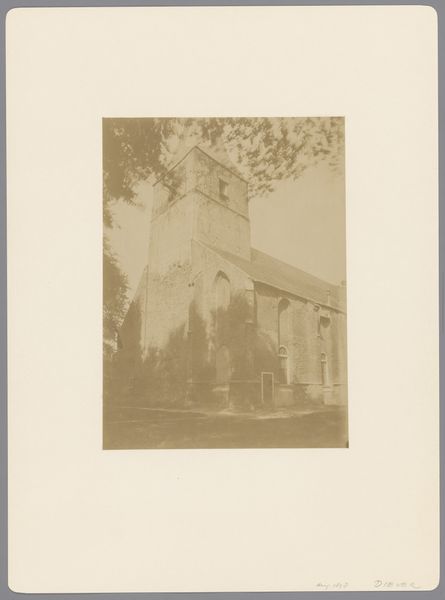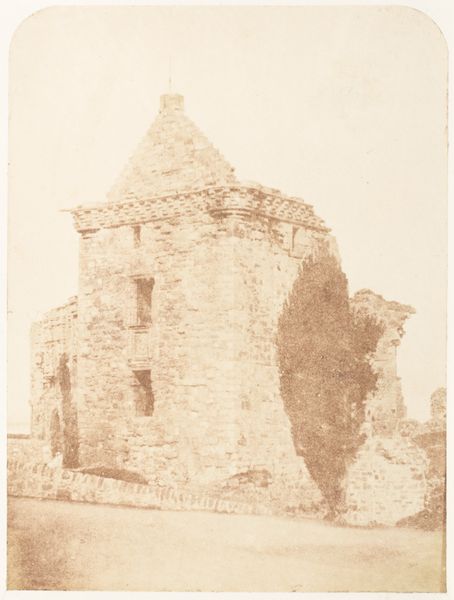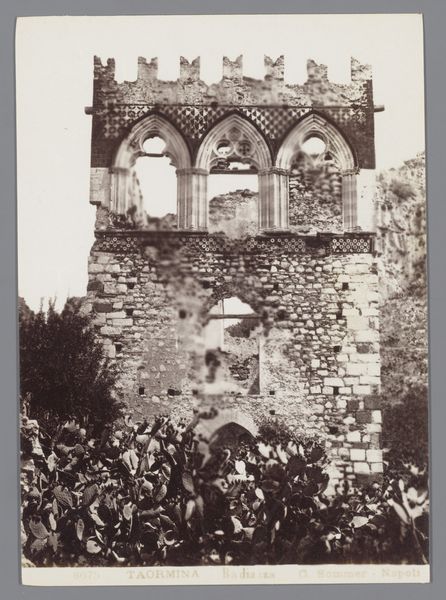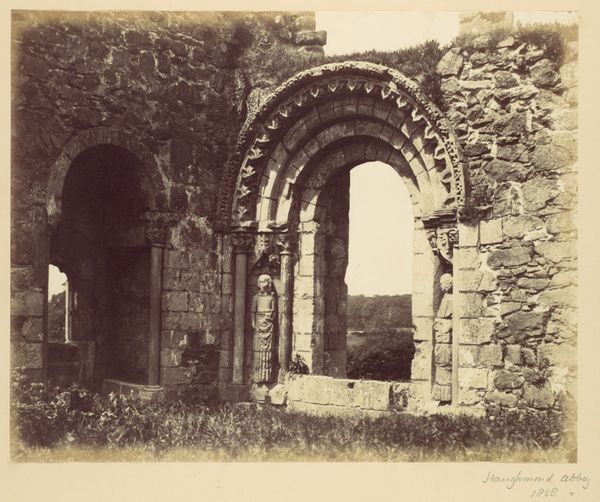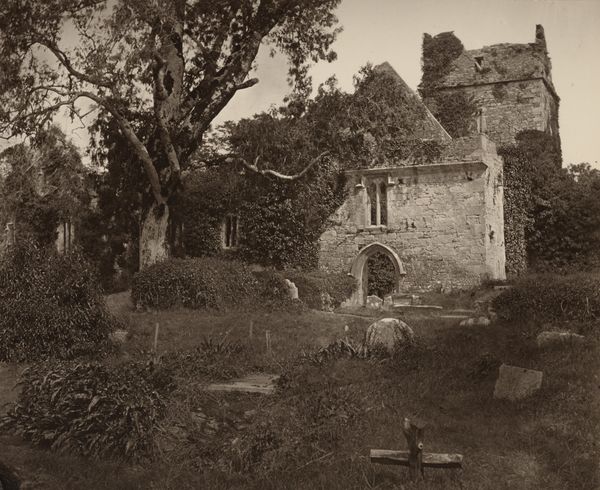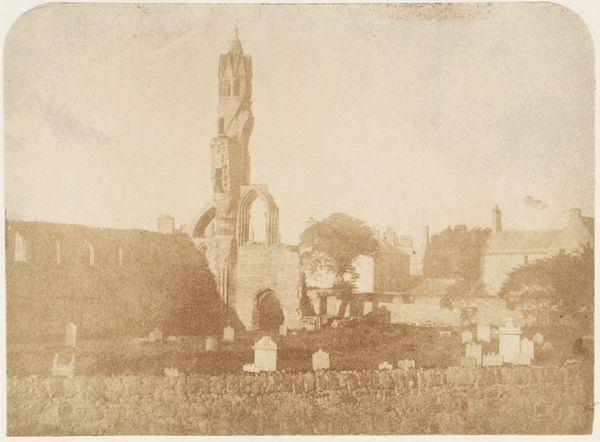
photography, site-specific, albumen-print
#
landscape
#
charcoal drawing
#
photography
#
ancient-mediterranean
#
site-specific
#
italian-renaissance
#
watercolor
#
albumen-print
Dimensions: height 254 mm, width 196 mm
Copyright: Rijks Museum: Open Domain
Curator: Ledru Mauro’s photograph, "Restanten van het Palazzo Badia Vecchia te Taormina, Italië," created sometime between 1880 and 1900, is an albumen print, capturing the ruins of an Italian palazzo. Editor: The overall mood is wistful, I think. The sepia tones give it that antique quality, but there’s something haunting in how nature is reclaiming the stone. Curator: Indeed. Mauro seems interested in documenting this architectural palimpsest. The image speaks to issues of power and decay, how societal structures, in this case represented by the Italian palazzo, crumble over time, eventually surrendering to natural forces. Editor: For me, the broken arches resonate. In iconography, arches often symbolize transitions, portals to other realms or states of being. These broken ones, now framing open air, hint at loss, interrupted journeys and faded glory. The jagged edges recall the medieval memento mori imagery, constant reminders of life's transience. Curator: Absolutely. Consider, too, the socio-political context. Italy, in the late 19th century, was experiencing profound shifts in national identity. Mauro, in documenting these ruins, is subtly commenting on the decline of aristocratic power structures. It makes me wonder about the intended audience of this photograph. Were they meant to be souvenirs for wealthy tourists, or was there a deeper critique embedded within? Editor: Perhaps both. Even the composition directs our gaze heavenward, inviting us to consider the palazzo’s connection with spirituality. Yet, the wild overgrowth suggests a divine disinterest in earthly constructions and their destiny. Curator: It is a poignant snapshot, this layering of societal change and the inexorable march of time. It compels us to reconsider our own contemporary structures of power and what might lie in their future. Editor: Agreed. There’s something universal about these symbols of decay and renewal—they remind us that even the grandest creations are destined to return to the earth from whence they came.
Comments
No comments
Be the first to comment and join the conversation on the ultimate creative platform.
